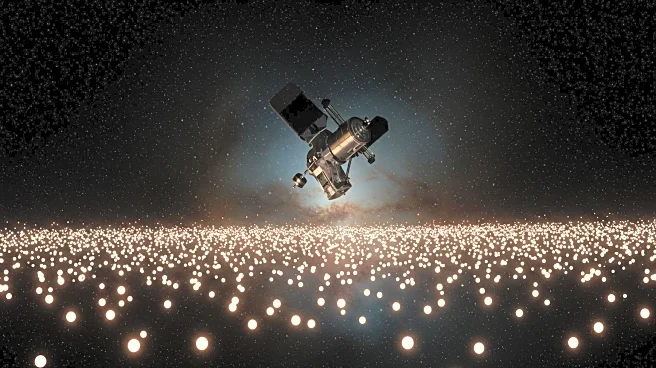Rapid Read • 8 min read
Recent research by mathematicians Claudia Fevola and Anna-Laura Sattelberger has introduced the concept of positive geometry as a unifying framework for understanding phenomena across different scales, from subatomic particles to galaxies. Published in the Notices of the American Mathematical Society, their work combines algebraic methods with positive geometry to describe particle interactions and cosmic structures. This approach moves beyond traditional Feynman diagrams, using geometric shapes and spaces to represent complex interactions. The study highlights the potential of positive geometry to simplify calculations of scattering amplitudes and provide insights into the universe's earliest history through cosmological polytopes.
AD
The introduction of positive geometry offers a new perspective in theoretical physics and cosmology, potentially revolutionizing how scientists calculate and understand particle interactions and cosmic structures. By providing a simpler framework for complex calculations, this approach could lead to more precise predictions and a deeper understanding of the universe's formation. The research underscores the symbiotic relationship between mathematics and physics, where advancements in one field can drive progress in the other. This could have significant implications for future research in high-energy physics and cosmology, influencing both theoretical and practical applications.
The field of positive geometry is still in its infancy, but it holds promise for significant advancements in both mathematics and physics. The scientific community is encouraged to further explore and validate these emerging mathematical objects and theories. Successful collaborations have already laid important groundwork, and continued research could lead to breakthroughs in understanding the universe at all scales. As the field develops, it may provide new tools for researchers to tackle longstanding questions in particle physics and cosmology, potentially leading to a unified theory that bridges these disciplines.
Positive geometry not only advances scientific understanding but also challenges traditional mathematical approaches, pushing the boundaries of how mathematics is applied in physics. This innovative framework reflects a broader trend of interdisciplinary research, where complex problems are addressed through collaborative efforts across different scientific domains. The development of positive geometry may also inspire new educational approaches, encouraging students and researchers to think beyond conventional methods and explore novel mathematical concepts.
AD
More Stories You Might Enjoy










